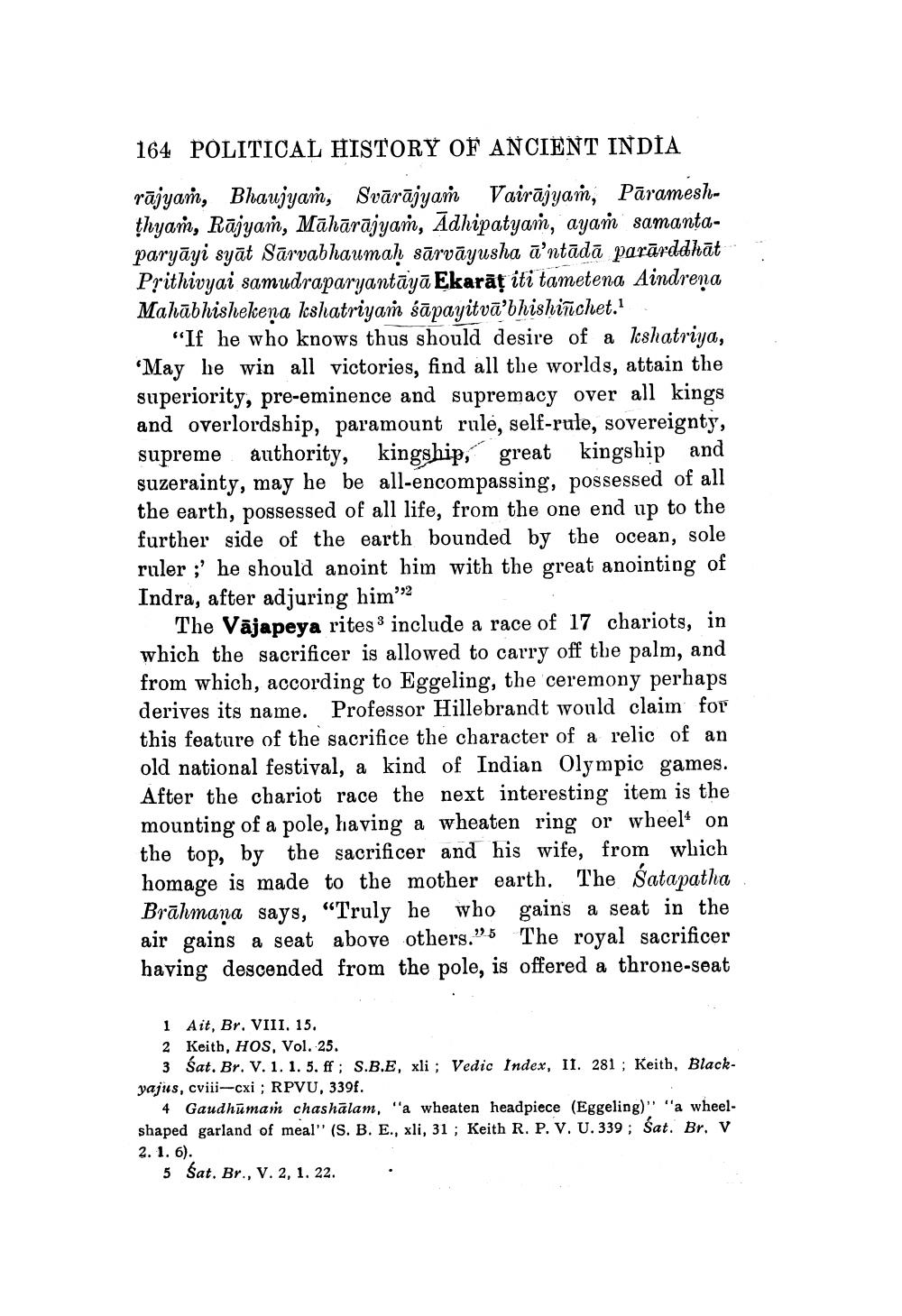________________
164 POLITICAL HISTORY OF ANCIENT INDIA
rājyam, Bhaujyam, Svārājyam Vairājyam, Pārameshthyan, Rājyam, Māhārājyam, Ādhipatyam, ayam samantaparyāyi syāt Sārvabhaumah sārvāyusha ā'ntādā parārddhāt Prithivyai samudraparyantāyā Ekarāț iti tametena Aindrena Mahābhishekena kshatriyam śāpayitvā’bhishischet."
"If he who knows thus should desire of a leshatriya, ‘May he win all victories, find all the worlds, attain the superiority, pre-eminence and supremacy over all kings and overlordship, paramount rule, self-rule, sovereignty, supreme authority, kingship, great kingship and suzerainty, may he be all-encompassing, possessed of all the earth, possessed of all life, from the one end up to the further side of the earth bounded by the ocean, sole ruler ;' he should anoint him with the great anointing of Indra, after adjuring him”?
The Vājapeya rites 3 include a race of 17 chariots, in which the sacrificer is allowed to carry off the palm, and from which, according to Eggeling, the ceremony perhaps derives its name. Professor Hillebrandt would claim for this feature of the sacrifice the character of a relic of an old national festival, a kind of Indian Olympic games. After the chariot race the next interesting item is the mounting of a pole, having a wheaten ring or wheelt on the top, by the sacrificer and his wife, from which homage is made to the mother earth. The Satapatha Brāhmaṇa says, "Truly he who gains a seat in the air gains a seat above others. The royal sacrificer having descended from the pole, is offered a throne-seat
1 Ait, Br. VIII. 15. 2 Keith, HOS, Vol. 25.
3 Sat. Br. V. 1. 1. 5. ff; S.B.E, xli; Vedic Index, II. 281 ; Keith, Blackyajus, cviii-cxi ; RPVU, 339f.
4 Gaudhūmam chashālam, "a wheaten headpiece (Eggeling)" "a wheel. shaped garland of meal" (S. B. E., xli, 31 ; Keith R. P. V. U. 339; Sat. Br. V 2. 1. 6).
5 Sat. Br., V.2, 1. 22.




